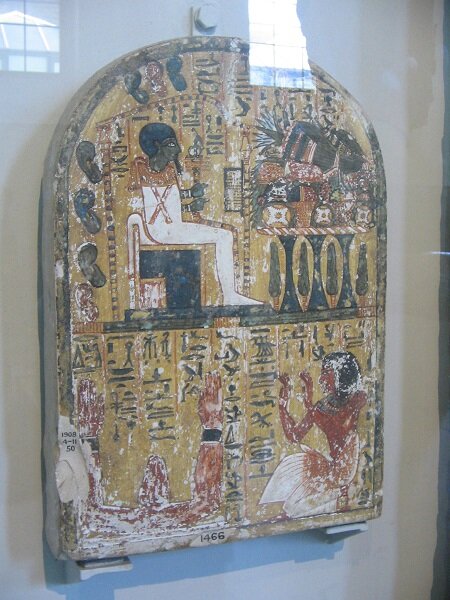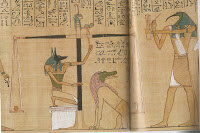The Sunday Section: Ancient Egypt - Language and Writing
(British Museum - own photo 2010)
One of the most popular projects we did while home-educating was Ancient Egypt. It went on for months, and would have carried on for longer if I hadn’t drawn a line under it. That didn’t mean the boys, especially Gordon, stopped learning about it; they carried on adding to their knowledge.
Based on the notes I’d gathered, I thought I’d do a series of posts on Egypt, starting with ‘Language’.
When thinking of the writing of Ancient Egypt, I think it’s fair to say that most people would think of hieroglyphs. But throughout their long history of over 3,000 years, the Ancient Egyptians used 3 kinds of writing, mainly for their religious and secular texts. These were hieroglyphic, hieratic, and demotic.
Before I get into it, I think it is important to be aware that one writing did not replace another. There were restrictions, based on geographical locations, I think, and practical need. In a nutshell, hieratic did not replace hieroglyphic, because hieratic was basically a cursive, speedier version of hieroglyphic; and demotic did not entirely replace hieratic, which was still used in religious texts.
Hieroglyph alphabet (basic)
The word ‘hieroglyph’ is derived from Greek. When the Greeks arrived in Egypt, the pictogram writing was mainly being used on temple walls, and was seen as ‘sacred carvings’ – the Greek'hieros’ means ‘sacred’, and ‘glyph’, ‘carving’. Known as the ‘Words of the God’, hieroglyphs are the basis of hieratic and demotic.
Hieroglyphic writing was used from around 3,500BC to about 394AD. By then only a few Egyptians knew how to read hieroglyphs. When the Roman Emperor Theodosius I closed all non-Christian temples in 391AD, the use of hieroglyphs ceased. The last known text was written on the walls of the temple of Isis on Philae, and is known as the Graffito of Esmet-Akhom, dated 394AD.
Graffito of Esmet-Akhom, Philae, last known hieroglyphics (image by Mickey Mystique)
Although used mainly on temple walls, and tombs, hieroglyphs were also used on sarcophagi, furniture, coffins, and papyrus. It was either inscribed or drawn, the quality varying from highly detailed signs to simple outlines, and were often painted in varying colours. It could be read from top to bottom, right to left, or left to right.
A special cursive form was used for the Book of the Dead.
The style was also used on the walls in the tombs of two 18th Dynasty kings, Thutmose III and Amenhotep II:
Scene from the tomb of Thutmose III
Scene from the tomb of Amenhotep II
The word ‘hieratic’ comes from the Greek ‘hieratikos’, meaning priestly, because when they arrived in Egypt, this type of writing was being used almost exclusively by the priests.
Hieratic
Hieratic writing is as old as hieroglyphic, but is more cursive, almost a speedily-written version of hieroglyph signs. Several details would be omitted, and smaller signs would be melded together. However, it was still possible to transcribe hieratic into hieroglyphics.
Hieroglyphic to hieratic
Because of the nature of the writing, it was mainly used on papyrus or linen. Although used mainly for religious writings, it was also used in administrative, and private texts and stories.
Not surprisingly, the word ‘demotic’ also comes from a Greek word – ‘démotikos’, which means popular, probably because demotic was used mainly in administrative, and private texts and stories.
Demotic
It developed during the latter part of the 25th Dynasty, about 650BC. Like hieratic, demotic was written, and read from right to left. However, as the brush or pen strokes were even quicker, the signs were usually more illegible than hieratic. As demotic was used more and more, the use and knowledge of hieroglyphic text faded because, unlike with hieratic, demotic texts were not transcribed into hieroglyphic text before translation.
Just for interest’s sake, the last stage of the Ancient Egyptian language was Coptic, which started to be used around the 1st century AD. Around the time Latin was becoming the diplomatic language of the Western world, Egypt was being absorbed into the Roman Empire, and was becoming home to large numbers of Greek and Roman immigrants.
Coptic writing
Native Egyptians came to be known as Copts, which takes its origin from ‘kpt’, the way the Arabs pronounced the Greek word for Egypt, ‘Aigyptos’. Although ordinary Egyptians still spoke their native language, the written language was in rapid decline as many of them were illiterate. The immigrants found the Egyptian scripts too confusing and intricate, so adopted a written version of the language, called Coptic. This was basically the ancient Egyptian language transcribed into the Greek alphabet with the addition of 7 extra letters or signs from the demotic script to represent Egyptian sounds not found in Greek. Coptic was gradually replaced by Arabic following the Arab conquest of Egypt in 641, and its only use now is as a liturgical language.









